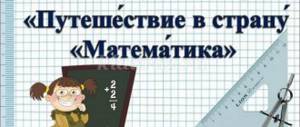Preparing to go outdoors
Chapter 1. Preparing for outdoor activitiesNow that you know how to navigate the terrain, determine the sides of the horizon in different ways, use a map, establish your location on the ground and on the map and choose the desired direction of movement, you need to consolidate all this in practice. The most accessible and effective way to acquire the skills and abilities to safely stay in natural conditions can be considered the preparation and conduct of tourist trips.
The most common and accessible form of hiking is one-day hikes with parents or a teacher.
In order for any outing to be successful, you need to be well prepared for it.
We will consider one of the possible options for preparing for a one-day hike, the purpose of which will be to gain initial skills in terrain orientation as one of the elements in ensuring human safety in natural conditions.
When preparing for a hike, you need to take an active part in developing its plan together with your parents or with a group of classmates under the guidance of a teacher, if you are going on a hike as a class.
When developing a plan, it is necessary to discuss in detail the main goals of the trip and the training tasks that will need to be worked on during the trip. Taking this into account, select a hiking area and determine a route. At the same time, it is necessary to keep in mind the attractiveness of the trip and the feasibility of the tasks being worked on. The main thing is that during the hike you get to know the natural environment better and get satisfaction from communicating with it.
When determining the area of travel, it is necessary to study it in detail. Then develop a route, which will require a large-scale map of the selected area. The starting and ending points of the route and the main landmarks through which the route will pass are established. It is better to choose turns on the route near characteristic, easily recognizable landmarks. (The distance between landmarks should not exceed 2 km.) After this, it is necessary to calculate the movement along the route. Calculations are drawn up on a map or in a special table.
To practice your navigation skills, you can include four training points along the stages of the route in your one-day hike plan: the starting point of the route, the point at landmark No. 1; point at landmark No. 2, the final point of the route.
End >>>
Creative mini-project on the development of speech and life safety in 4th grade
Creative mini-project for the development of speech and life safety “Take care of your life from a young age!”, 4th grade
I bring to the attention of elementary school teachers a plan of work on a project on the development of speech and life safety “Take care of life from a young age.”
The goal of this project for students is to create a collection of instructive stories about the dangers that can happen in life. Project type: practice-oriented , aimed at solving social problems that reflect the interests of the participants;
A mini-project designed for three lessons - in the first, children get acquainted with the instructive stories of Leo Tolstoy, in the second, they write an instructive story themselves (these lessons should be paired), the third lesson - a presentation is carried out when the teacher prepares the collection; carried out within the framework of the educational field “Literary reading”. Stages of work on the project:
1. “Immersion” in the project 1.1. Creating motivation During an extracurricular reading lesson, students get acquainted with the works of L. Tolstoy. At the end of the lesson, a motivational moment: - Can we say that L. Tolstoy’s stories are instructive? — We talked about the fact that many of L. Tolstoy’s stories are true. Have there been such incidents in your life that taught you something? — What can we do so that these stories teach caution to other children? 1.2. Planning - What would you like to talk about? How to submit your work? Students together with the teacher plan their activities 2. Independent work on the project 2.1. Analytical stage The teacher reminds the need for introduction and conclusion. A “lesson” is required. Children write an instructive story in lesson 2.2. Stage of generalization of information The teacher edits children's work, forms it in printed form into a collection 3. Outcome of the project 3.1. Presentation Children from the after-school group are invited to the presentation, students read out their works, the collection is donated to GPD 3.2. Reflection - Did you enjoy working? — Do you think our work was useful? — Who else could use our collection? If possible, collections can be printed for each student, and another copy can be donated to the school library. You can also make a presentation of the collection at a parent meeting. The guys and I came up with this little book:
We recommend watching:
Workshop for parents of the 2nd junior group Lesson in the development of written speech based on the story by V. Astafiev “Belogrudka” Summary of educational activities on speech development on the topic: Winter in the preparatory speech therapy group Formation of research skills and ICT - competencies of junior schoolchildren through project activities
Similar articles:
Development of fine motor skills in children
Project-based extracurricular activities in elementary school
Stages of working on a project in elementary school, grades 3-4
Projects in elementary school in mathematics, grades 3-4
Projects in elementary school, grades 3-4. The world






